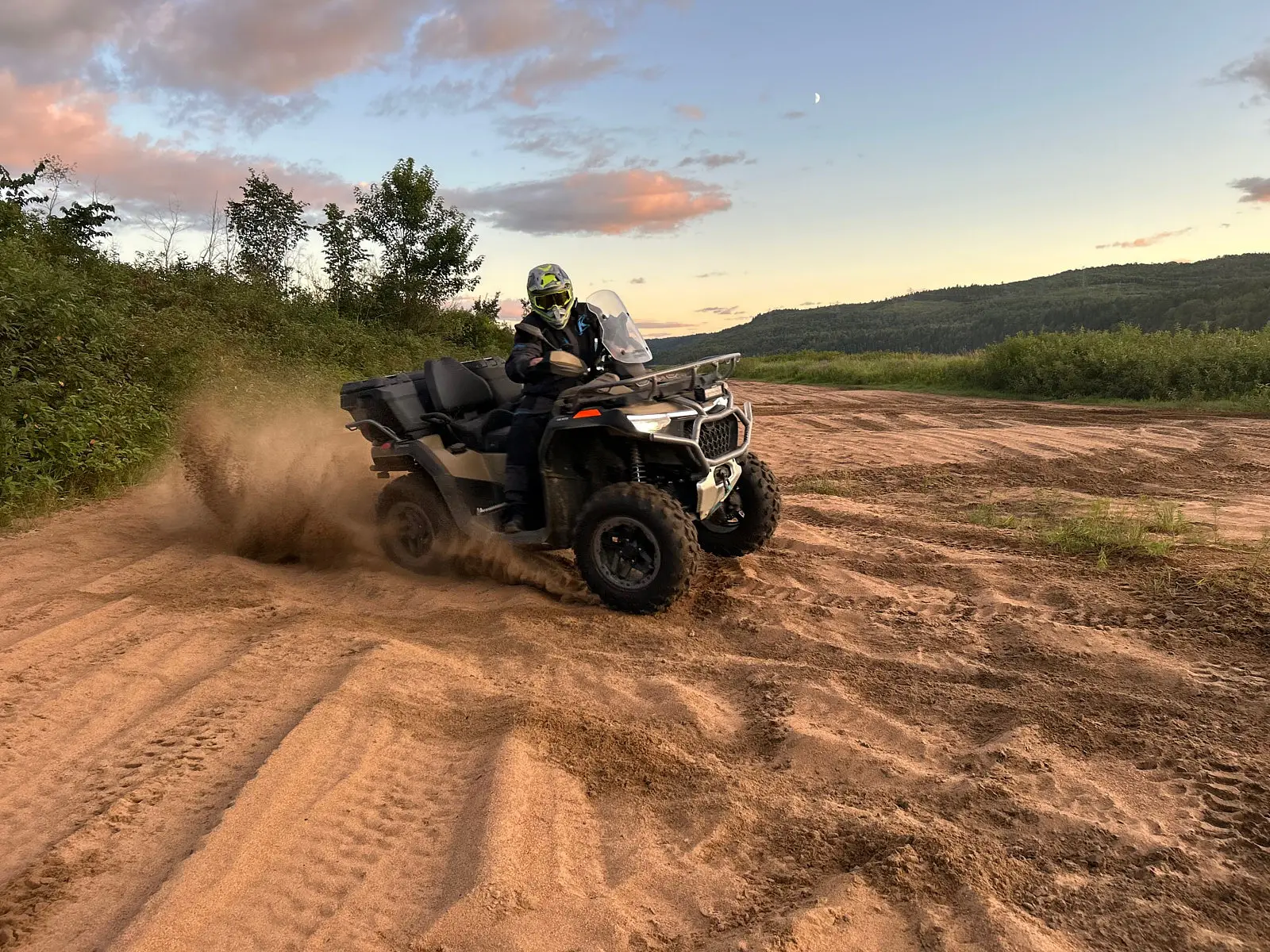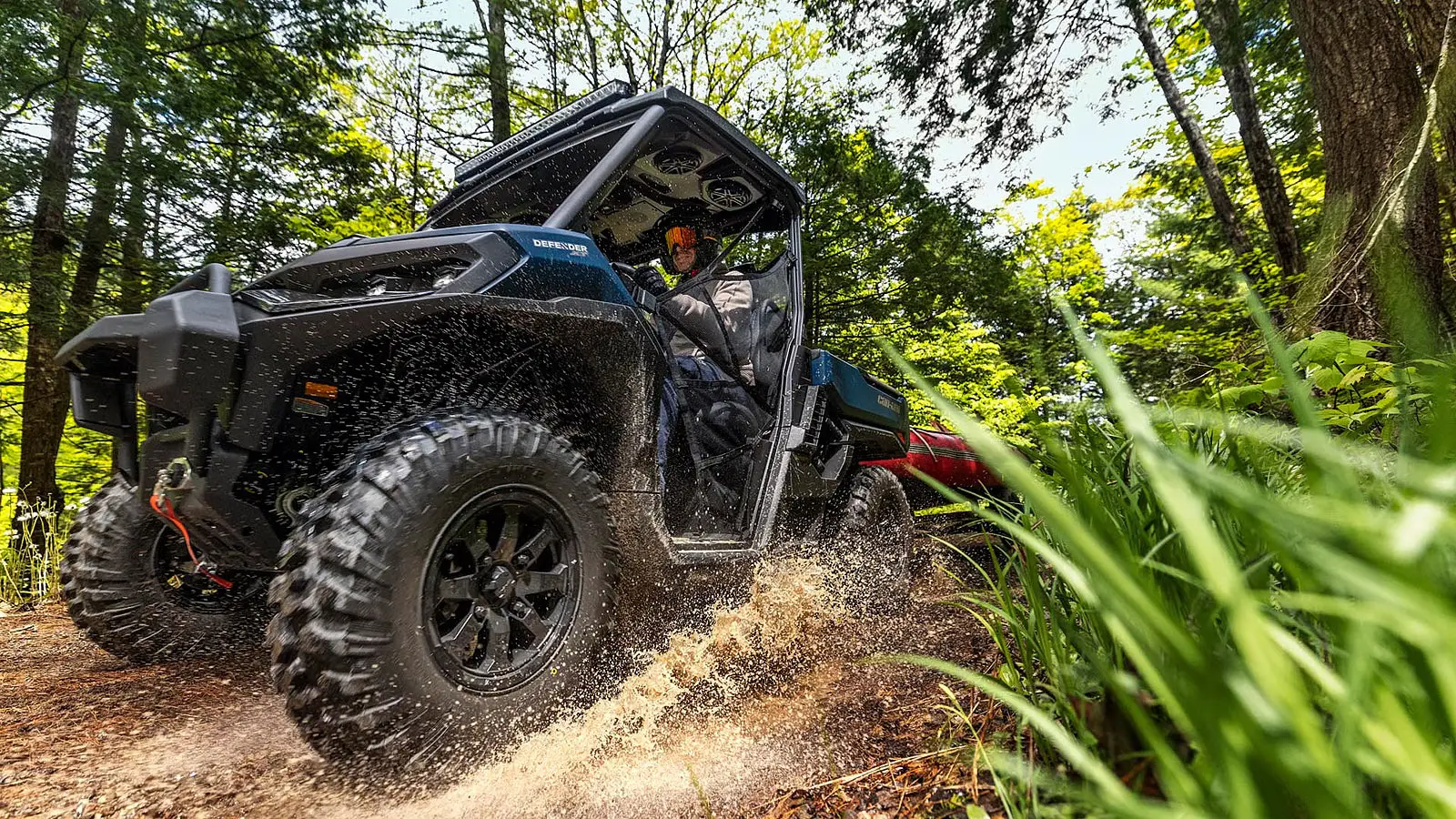Table of contents
Toggle- Design and Chassis: A Still Modern Look
- Rotax Engine: Power and Performance
- Technical Specifications of the Can-Am Outlander MAX XT 850
- My Experience with the Outlander MAX XT 850
- My Favourite Improvements Over the Years
- Areas for Improvement
- The Can-Am Outlander MAX XT 850: An ATV Still on Top
- Keep Reading
This year, I had the chance to test the Can-Am Outlander MAX XT 850 2024 for a short period. I managed to cover just over 500 km in two different regions. This ATV is built on a chassis that is starting to age. However, this article will attempt to show that this model is still relevant and remains a good purchase.
Design and Chassis: A Still Modern Look
Although this model has been around since 2012, I find that this ATV still has a great look. I never get tired of it. The wildland camouflage colour on the vehicle I tested has certainly become one of my favourites. Whether the ATV is clean or dirty, it looks great.
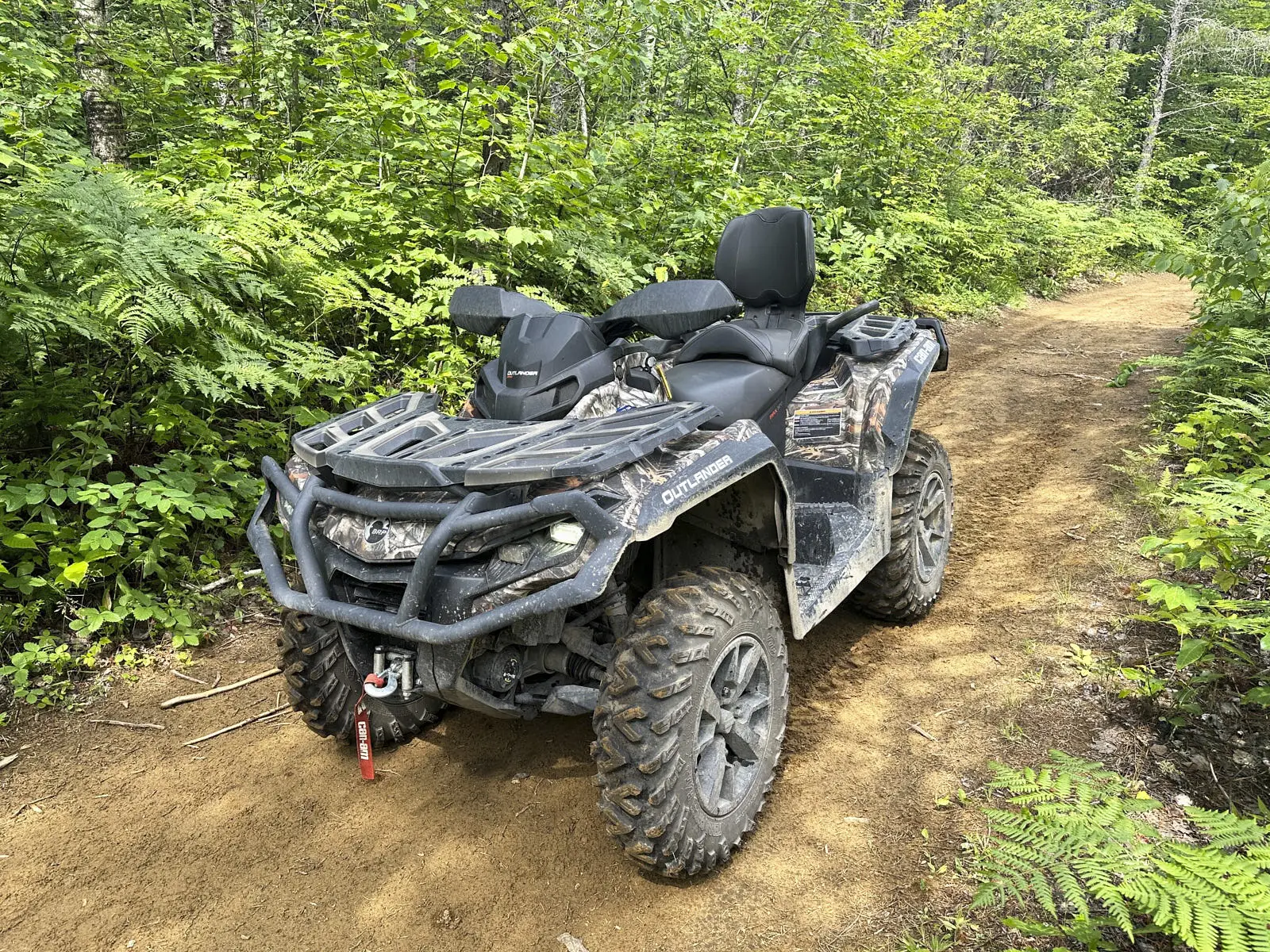
By the way, I’d like to give a special mention to the “Fiery-Red” colour for other 2024 models. I find it simply superb!
The chassis of this quad, commonly referred to as G2, dates back to 2012 and is starting to show its age. The G2 chassis is less rigid than the G3, but it does have the advantage of being slightly lighter. In summary, the G2 chassis is good, but I believe the G3 chassis is superior in terms of performance. In this sense, it would be appropriate and desirable for Can-Am to migrate to the G3 platform with its luxury range, as well as the “big bore” models. Hopefully, this is part of Can-Am’s plans.
Rotax Engine: Power and Performance
The 854 cc Rotax V-twin engine that powers the Outlander MAX XT 850 is one of the best engines at Can-Am. With its 78 horsepower, it is more powerful than most engines of its competitors. It performs similarly to the 1,000 cc (91 horsepower) in many situations, except for launching from a standstill in a long stretch or cruising on forest trails.
When navigating tighter trails with lots of curves, the power difference is less noticeable. Yes, even when pushing the ATV to its limits. The model with the 850 engine will be cheaper to buy and less costly on fuel than the 1,000. It’s a reliable engine that has been available for years at Can-Am. The acceleration and throttle response are excellent. The 1,000 cc is definitely faster, but I feel that buying the 850 model doesn’t involve much of a compromise.
Technical Specifications of the Can-Am Outlander MAX XT 850
The ATV I tested is the “XT” model. I recommend this configuration to most people because it is well equipped. Indeed, the Can-Am Outlander MAX XT 850 comes with bumpers, a winch, a three-mode DPS power steering, aluminum rims, and handguards. The 14-inch ITP Terra Cross R/T tires on this model are radial. They are durable and provide good handling on trails or even on asphalt.
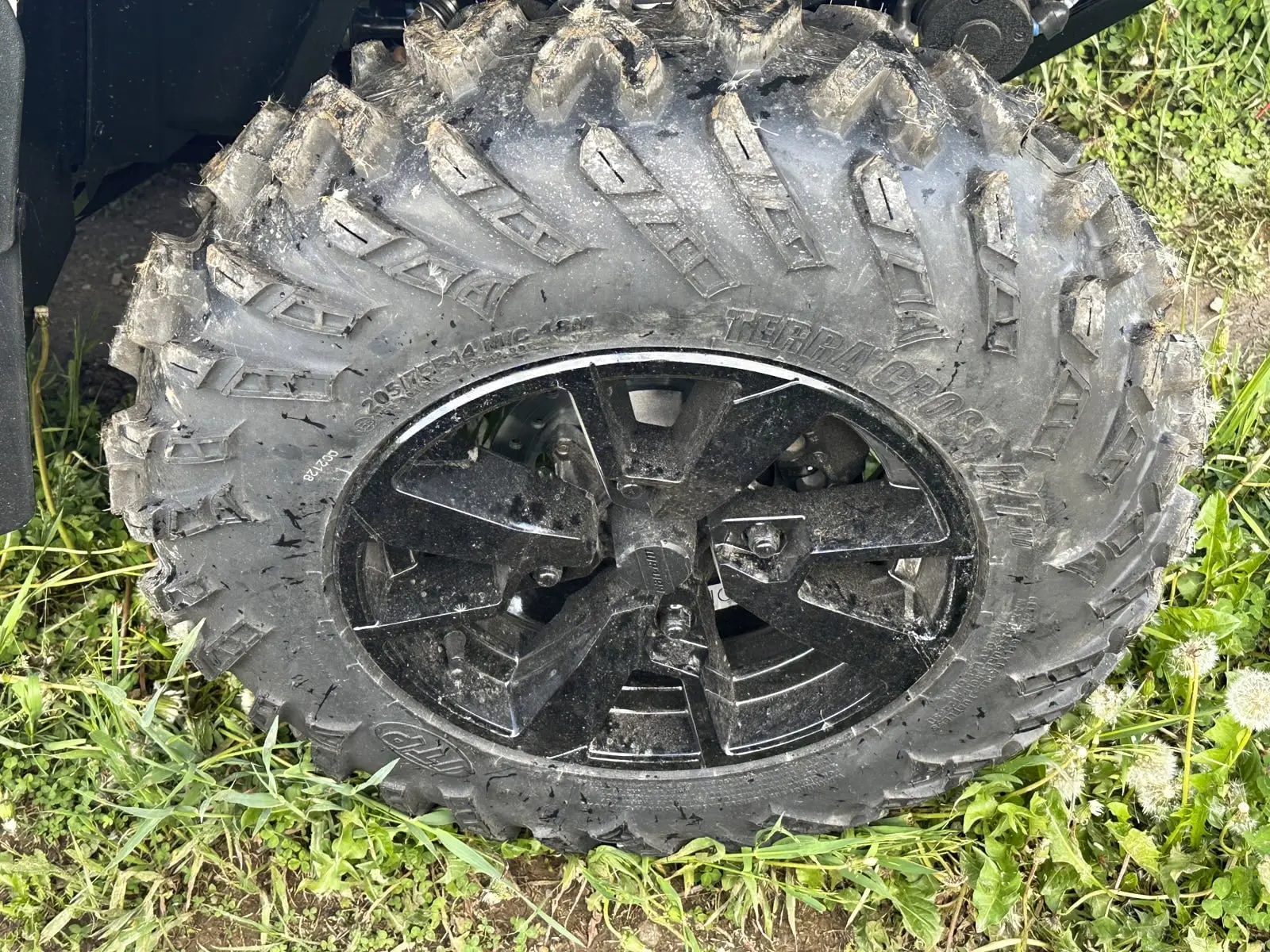
This ATV features a front locking differential (Visco-Lok QE). It also has a 20.5-liter fuel tank and includes a front double A-arm suspension and an independent rear suspension (TTI) with a stabilizer bar. It has 9.2 in. of front travel and 9.9 in. of rear travel. The Outlander MAX XT 850 2024 is equipped with twin-tube shocks.
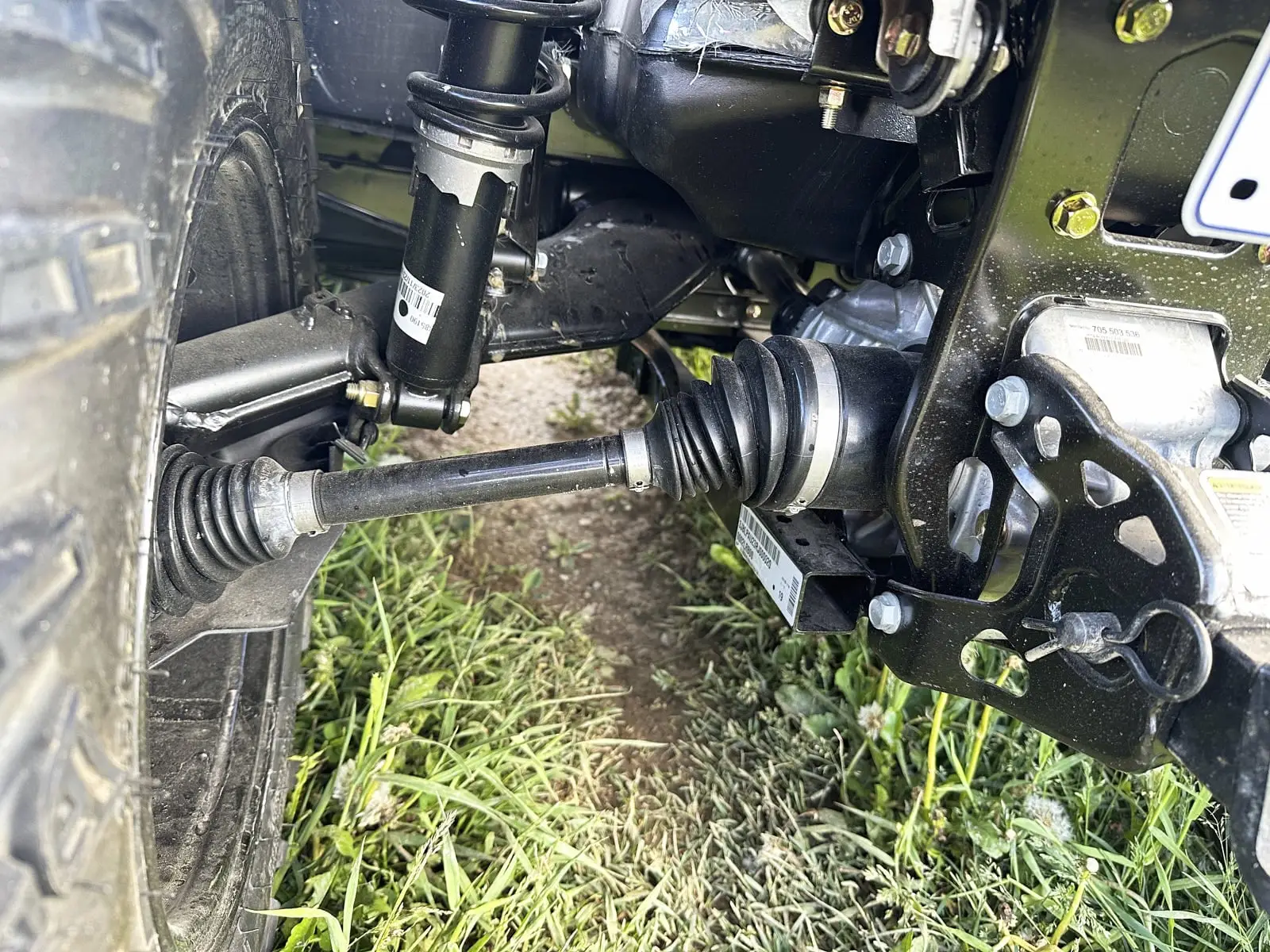
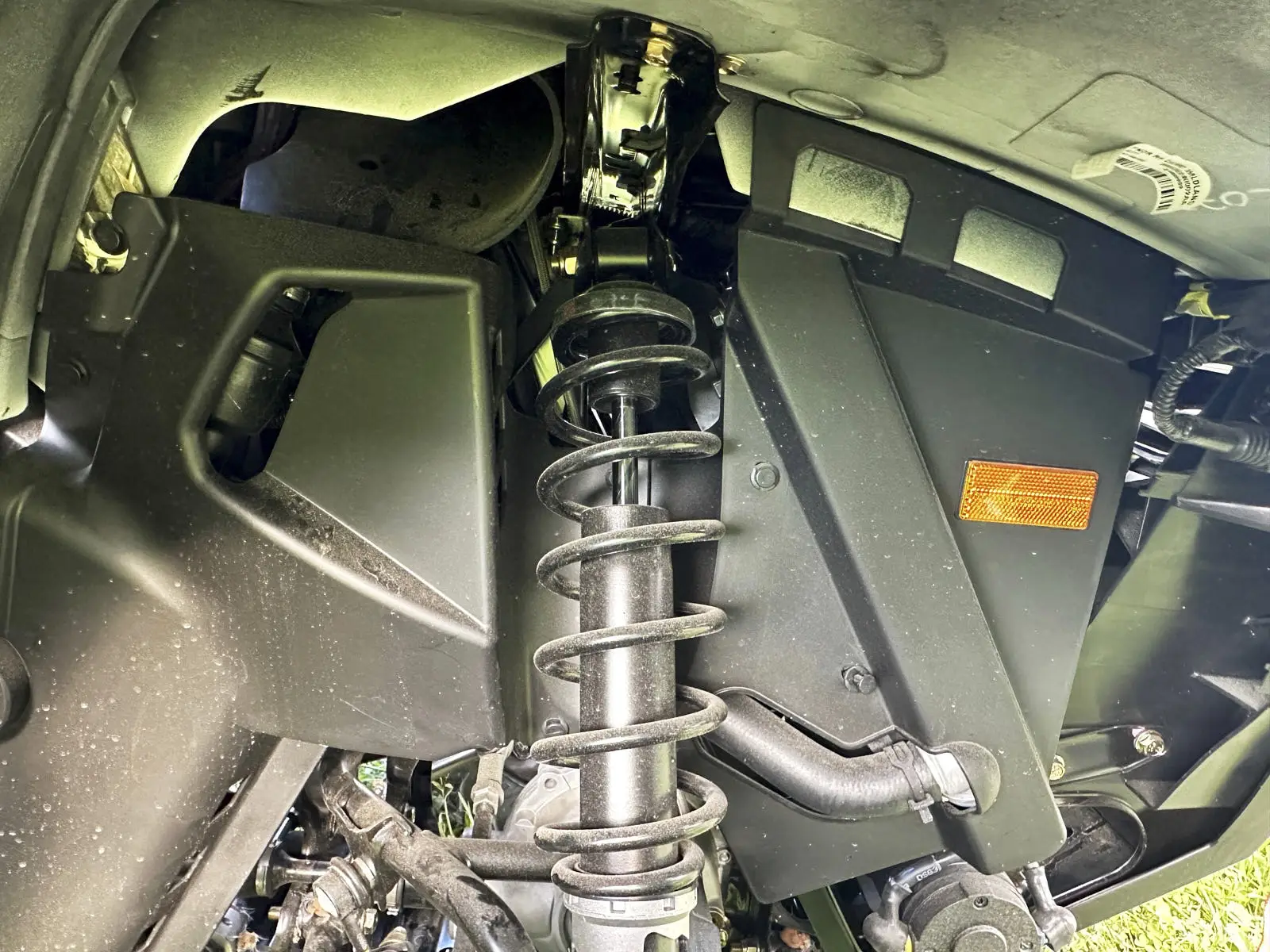
This vehicle has a three-mode intelligent braking system (IEB) and weighs 869 lb dry. The XT model has a 4.5-inch LED display.
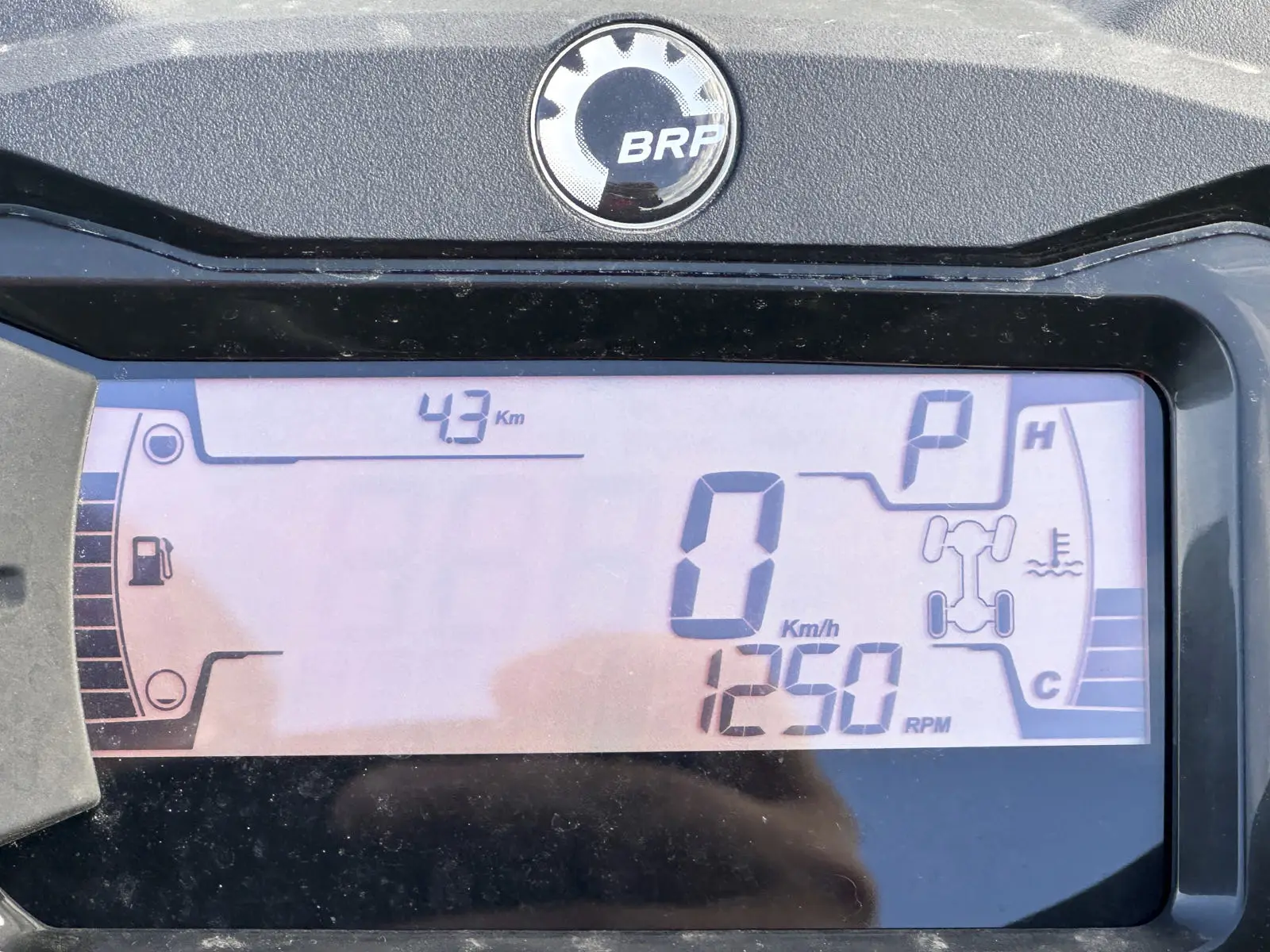
It is possible to tow up to 1650 lb with the ATV, which is quite excellent.
My Experience with the Outlander MAX XT 850
This is the first Can-Am MAX version I’ve tested on the G2 platform. The single-seat ATV is faster and handles better in curves when driven alone. I always thought there was a significant difference, but it’s actually better than I anticipated. The Can-Am Outlander MAX XT 850 is much less dangerous with a second passenger as it is more stable. It remains just as maneuverable and almost as performant. Having tested it with my partner, it is also much more comfortable for a passenger. It is definitely less prone to tipping. Initially, I expected a big compromise. In the end, I believe the compromise was less significant than I expected.

The engine is powerful and its sound is exhilarating. Moreover, the CVT is efficient and allows for excellent acceleration. In fact, it’s one of the best in the industry for transferring power to the ground. The power steering does its job and is definitely handy with tracks in winter. In terms of ergonomics, I haven’t noticed any significant changes. The posture is good and the buttons are easily accessible and almost all well placed.
My Favourite Improvements Over the Years
Over the years, Can-Am has made several modifications and improvements to its Outlanders. Here are my top three. For me, the most significant improvement is the widening of the ATV from 46 to 48 inches in 2019. This change provides better stability to the vehicle, which is an excellent thing. The overall handling is also significantly improved. LED headlights are another great improvement. In addition to being efficient, they are much better insulated than before.
The last modification is the increase in power for the 1,000 cc engine. It went from 81 to 89 horsepower in 2017, and then from 89 to 91 horsepower in 2019.
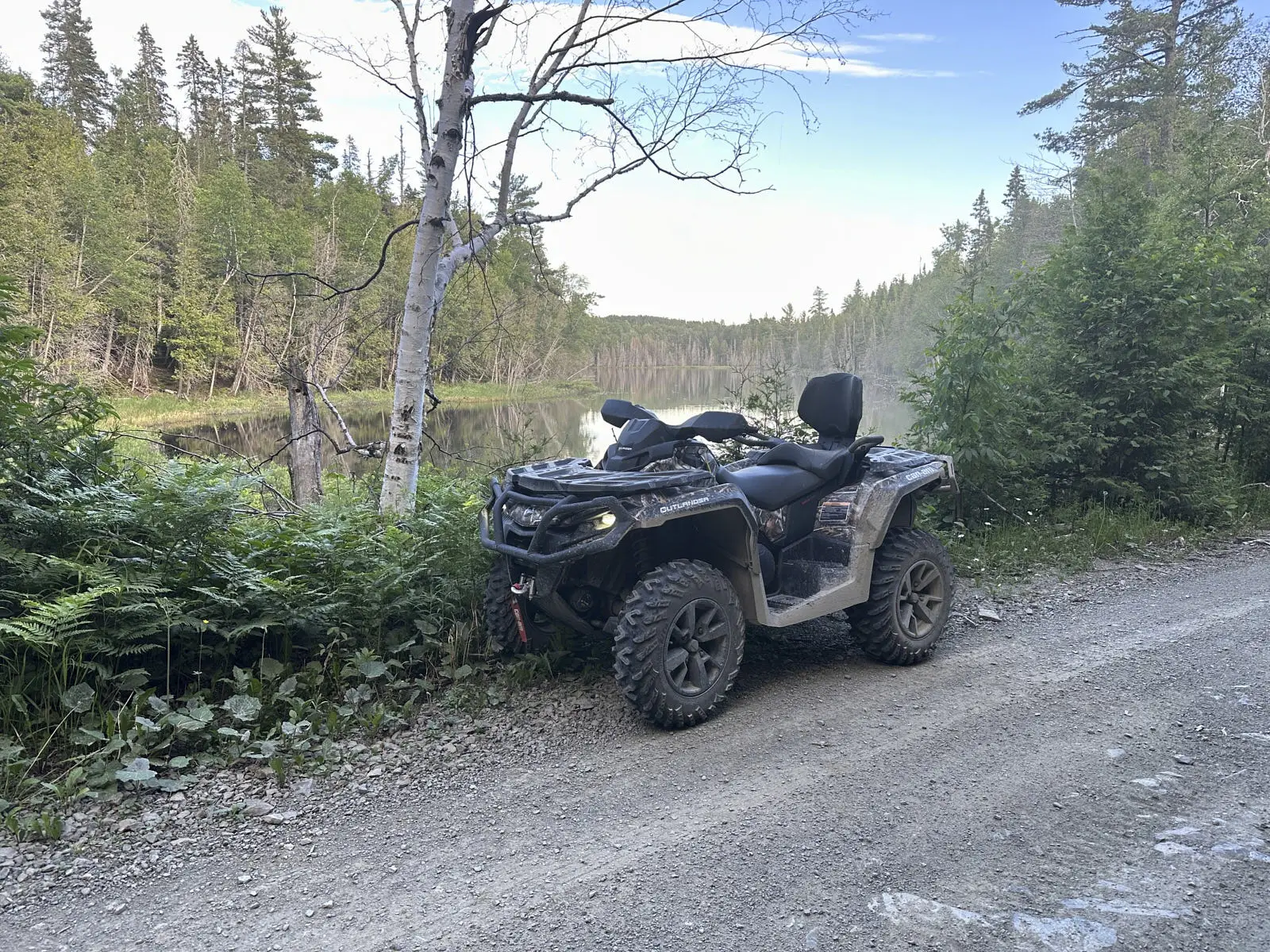
Sometimes, improvements and updates are more subtle over the years. I own a 2017 Outlander and can cite two examples. I’m referring to better wire insulation for the headlights and improved long-term durability. Or the Torx screws to better secure the tachometer and keep it in place. This prevents water from entering and also offers a much better aesthetic finish.
Areas for Improvement
I must mention that all Outlander models on the G2 platform generate a lot of heat around the lower legs in the summer. It’s especially noticeable when wearing shorts. Another drawback is the electronic throttle control (iTC) in sport mode. Although it provides much better performance than a cable throttle.

The problem is that the throttle lever is too soft and sensitive when navigating bumpy trails. It is difficult to maintain speed without either releasing the throttle or pushing it further. This causes sudden speed changes and is really uncomfortable. I must also mention the mode button that is easy to catch on branches. Not to mention that the mode resets to its default value each time the ATV is restarted. I need to mention the clutch lever, which sometimes doesn’t allow for easy gear engagement.
Some maintenance tasks are time-consuming. For example, applying grease to various grease points, especially those on the differential. The same goes for removing plastic panels to change the oil. Changing the belt on the trails is difficult, particularly if you don’t want to remove the footrest. In this case, some CVT cover screws are not easily accessible, even with a removable socket.
I would have liked the XT variant to come with the Visco4lok, which allows locking all four wheels simultaneously. This is a particularly interesting option for hunters.

The Can-Am Outlander MAX XT 850: An ATV Still on Top
To conclude, is the Can-Am Outlander MAX XT 850 2024 a good choice? Absolutely! It’s a high-performing and enjoyable ATV to drive. This vehicle is not perfect, but it has certainly demonstrated a very good level of reliability over the years, despite its power. Although the chassis is aging, it is still one of my favourites in the industry and performs very well. Moreover, I can’t get enough of this engine. While the Outlander 700 is the reason, the 850 is the performance and excess. Even after several years, this ATV remains one of my top choices at Can-Am. The Outlander MAX XT 850 2024 is still one of the top utility ATVs. Thanks to Infoquad.com and Can-Am for allowing me to conduct this test.





